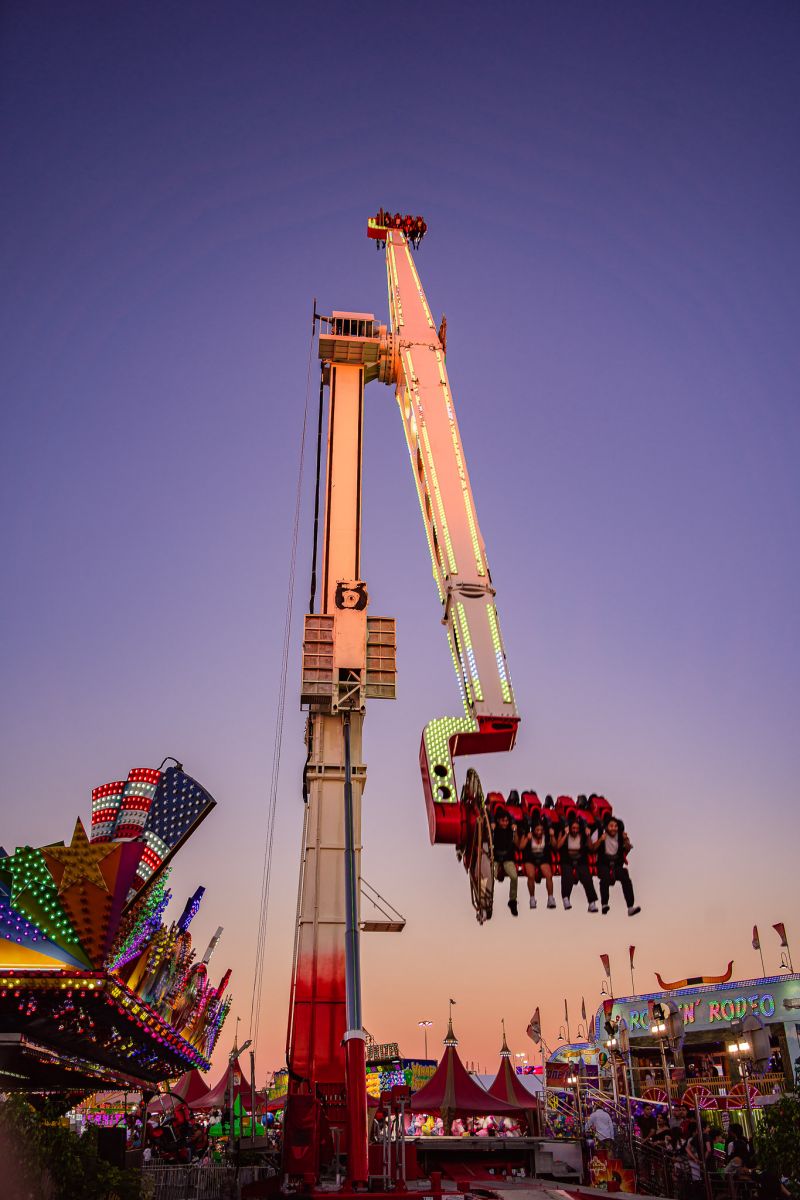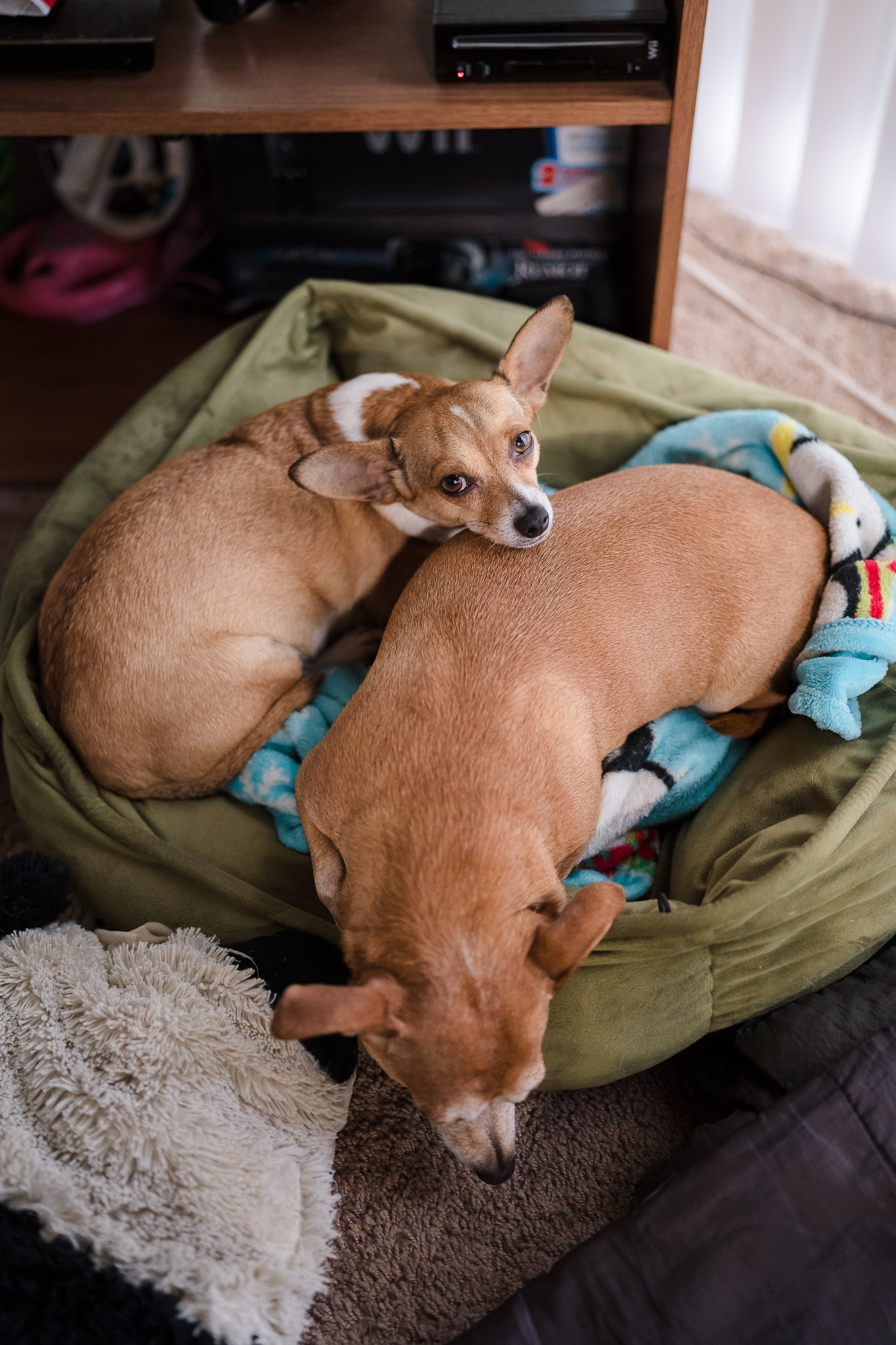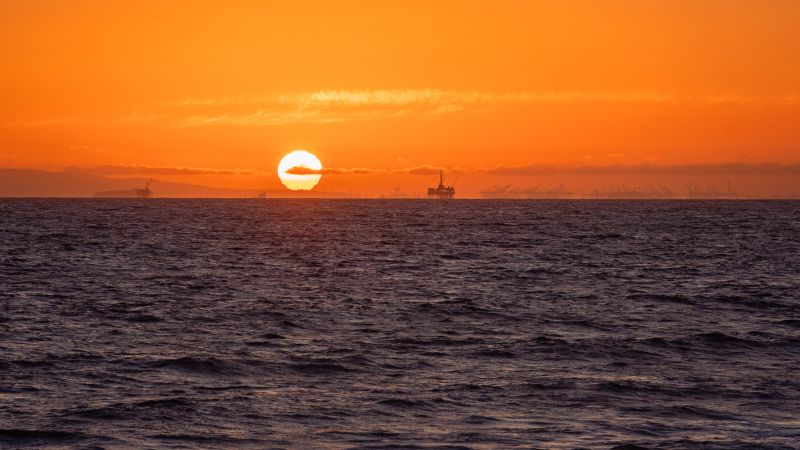
Here is Sony’s first beginner-oriented, entry-level full-frame mirrorless camera: the Sony A7C. It’s a great camera, I’ll tell you that right now, but there are also some significant qualms I have that make me hesitant to recommend it compared to some of the other cameras available today.
Indeed, full-frame mirrorless cameras are becoming increasingly common now, with Canon, Nikon, Sony, Panasonic, and Sigma all having competition priced at under $2,000. In a previous article, I compared the three newest cameras, including the A7C ($1798) plus the Nikon Z5 ($1,296) and the Panasonic S5. ($1,997)
Believe it or not, but to be totally honest (spoiler alert!) the Sony A7C wasn’t the hands-down winner. The market is getting that competitive. Sony’s mirrorless technology does have advantages, but let me just put it this way, and let me know if it makes sense: Sony definitely did NOT make an “A5” to compete directly with the Panasonic/Nikon 5’s. They made the A7C, and I’m inclined to assume that the “C” stands for “consumer”.

Sony is smart, though, and the A7C makes that clear. The camera’s strengths are exactly the types of features that will be attractive to any beginner, consumer, or even serious, experienced hobbyist. Oppositely, the camera’s omissions or weaknesses are only going to matter to the aspiring professionals, or current pros who may have already worked with, say, a Sony A7 III and therefore might know what they’re missing when they hold an A7C.
Without any further ado, I’ll dive into this Sony A7C review and explain which types of photography the camera could be perfect for, where it might fall short, and which exact advantages or disadvantages you might want to give extra consideration to, depending on what type of photography or videography you do.
Sony A7C Specifications

- SENSOR: 24-megapixel, full-frame, BSI CMOS sensor, BIONZ X processor
- LENS MOUNT: Sony E, (FE full-frame)
- STILL IMAGES: 6000×4000 ARW (raw, compressed or uncompressed) & JPG
- VIDEO: 4K 30p max 100 Mbps, MP4, XAVC S, H.264, S-Log3 Gamma
- ISO: 100-51200 (expandable to ISO 50-204800)
- AUTOFOCUS: 693-point hybrid AF, face/eye detection, Real-Time Tracking (both photo & video)
- SHOOTING SPEED (FPS): 10 FPS max
- SHUTTER SPEEDS: 30 sec to 1/8000 sec (mechanical shutter up to 1/4000 sec, flash sync 1/160 sec
- STABILIZATION: Yes, 5-stops, 5-axis IBIS
- VIEWFINDER: 2.36M-dot EVF, 0.59x magnification, 100% coverage
- LCD: 921K-dot touchscreen, fully-articulating
- CONNECTIVITY: USB-C, (PD) micro HDMI, microphone, headphone, Bluetooth, wifi, NFC
- STORAGE: SD (one slot) HC/XC, UHS-II supported
- BATTERY: NP-FZ100, (2280 mAh) 740-shot CIPA rating
- BODY CONSTRUCTION: metal alloy, weather-sealed
- SIZE: 4.9 x 2.8 x 2.4 in. (124 x 71.1 x 59.7 mm)
- WEIGHT: 1.1 lb (509 g)
- PRICE: $1,798 (body-only), $2,098 (with 28-60mm lens kit), $2,896 (with 24-105mm lens kit)
Sony A7C Review | Who Should Buy It?

At a glance, the Sony A7C is basically a full-frame version of the entry-level Sony A6100 or A6400. It adds a fully-articulating LCD screen on the (out)side, and IBIS (stabilization) on the inside, but honestly? It really is a full-frame version of Sonys most beginner-oriented camera.
This makes the camera one of the lightest, most compact full-frame cameras on the market, which is perfect for some photographers. However, it also means that anyone who is looking to get really advanced, and do a lot of high-end work, might really miss certain things like the dual command dials, dual C1/C2 top buttons, etc.
I’m going to do my best to consider different popular genres of photography, and describe why you would or would not want to consider the Sony A7C.
Portrait & Wedding Photography

Most casual photographers are going to be taking pictures of their friends, family, and important life events of any kind; everything from weddings to family reunions, maternity, newborn, kids, high school seniors, …everything!

The good news is, the Sony A7C is almost perfect for the casual photographer who just wants an excellent camera that balances portability with amazing face/eye-detection autofocus, impressive image quality, and an incredible lens selection to suit any and every occasion. Whether it is everyday life or a once-in-a-lifetime event, bringing this camera along would be a great idea.

The bad news is that the lightweight, compact, affordable package did require some compromises. Externally, it’s got the buttons and dials of a beginner camera. Internally, it’s got plenty of speed and power, but it does lack dual card slots, which is a feature that pretty much every camera worth more than $1K has now, and most working professionals prefer to have.
So, could you use it for professional work? Yes, absolutely! But, is the A7C an optimal choice for full-time pro photographers? No; at best, it’s a secondary/backup camera that you would pair with a Sony A7-series or A9-series.
Candid & Street Photography
Aside from portraits, weddings, and other types of photography that often lead to professional aspirations and paying work, the rest of candid, street, and everyday life is really and truly what the Son y A7C is well-suited for.


Throw the A7C in Aperture priority mode, set Auto-ISO to “fast”, turn on Face+Eye AF, and basically trust the camera to nail every photo perfectly every time! If you’re not the type of photographer who is constantly controlling every setting that the camera has to offer, then you’ll appreciate the simplified interface, and the capable, reliable autofocus system, and the lightweight portability overall.
For walk-around, candid, street, travel, and basically any kind of photography from everyday activities to exotic vacations, the Sony A7C is a very capable camera, especially when you pair it with a fantastic super-zoom like the Tamron 28-200mm f/2.8-5.6. (Yes, that’s right, a superzoom lens that has a professional f/2.8 aperture on the wide end!)

That’s the other advantage of Sony’s E-mount in general; you get such a wide variety of lens options, from high-end flagship options to affordable and/or portable, compact, “modest” lenses, perfect for any and every type of photography imaginable.
For these reasons, the Sony A7C gets my top recommendation for all types of general photography.
Vlogging & Video

This is arguably the main purpose for which the Sony A7C was created. Combine a fully articulated LCD, IBIS, and a fantastic face/eye detection AF system in one of the most lightweight full-frame camera bodies on the market, and you’ve got an excellent vlogging camera.
If I am not mistaken, it’s actually the lightest full-frame camera body on the market with IBIS, which is a fact that every vlogger whose arms ever got tired (and shaky) will really appreciate.
Last but not least, pair it with a perfect vlogging lens like the Sony FE 20mm f/1.8 G, and, well, we’ve literally checked all the boxes for the perfect setup.
Action Sports & Wildlife Photography
The Sony A7C offers 10 FPS shooting and a decent buffer, so, as long as you’re not photographing the Olympics or other professional sports, the shooting speed and the autofocus tracking will be more than enough for anything fast-paced, from your kids’ sporting events to that wildlife safari adventure you’ve been saving up for.
Having said that, what if you mostly do telephoto photography, where “reach” is everything, and what if you mostly work in lighting conditions that are, shall we say, half-decent? If you’re never going much higher than ISO 1600 or 3200, then I honestly have to recommend the Sony A6600. I just prefer the crop factor for telephoto work, plus, the A6600 costs less yet offers more physical functions.
Landscape Photography

Landscape photographers often go for the highest-megapixel cameras on the market, and today that means at least 42 megapixels, and possibly as many as 61, for Sony’s E-mount. For this reason, the A7C’s 24-megapixel sensor might not catch your eye if you’re really serious about landscape photography.


Honestly, though? 6000×4000 pixel images are still huge. You can make very large prints with that! For this reason, I still recommend the A7C for those landscape photographers who are looking to travel light, without forfeiting the amazing full-frame image quality, or rugged (weather-sealed, metal body) physical build.
Nightscape & Astrophotography
The Sony A7C really excels at achieving great image quality at high ISOs. For candid and most types of general photography, literally every full-frame camera these days offers excellent image quality up to ISO 3200 or even 6400. However, with subjects like astro-landscapes, things are just a little more demanding and having low noise, high detail, and great dynamic range are important.

In this regard, the Sony A7C’s 24-megapixel sensor is one of the best around. Simply put, if you ever find yourself complaining about shadow noise at any ISO lower than, say, 12800, …then it’s your own fault for not nailing a decent exposure; it’s not the A7C’s fault.
Sony A7C Review | Pros & Cons
I’ve outlined the advantages and disadvantages quite extensively already, so, I’m going to list each aspect of a camera review and simply give my notes based on the last year’s field testing. Long story short? There is very little to complain about, aside from the entry-level ergonomics.
Image Quality


24-megapixel full-frame sensors are everywhere these days, and for years they’ve all been excellent, offering amazing dynamic range, impressively low noise levels all the way up to ISOs as high as 6400 or even 12800 for professional work, or maybe ISO 25600 for more casual (or emergency) shooting conditions.


Simply put, if 24 megapixels is enough for you, then you’ll love the images from the Sony A7C. These days, however, 40-60 megapixels has become more common and popular, but it’s really not necessary for most types of photography unless you truly do make lots of very large prints, which is one thing that is very common in landscape photography.
Alternately, from telephoto action sports and wildlife to wedding and portrait photography, at least some photographers who use 40-60 megapixel cameras have gotten in the convenient habit of throwing their Sony camera in “Super-35” mode, and turning their one prime into two primes, or giving their telephoto zoom a little extra reach, so to speak. This could be counted as a drawback of having “only” 24 megapixels, but, I will leave the “how much cropping is too much/lazy?” debate for the comment section.


The colors coming from the Sony A7C sensor are beautiful if you happen to shoot JPG, and quite decent if you are working with raw files in Adobe Lightroom. (They are also gorgeous if you open raw files in Capture One!)
In terms of video, the A7C offers plenty of quality, though not a very stunning technical spec sheet. In other words, the video itself is detailed and has good dynamic range, thanks to being full sensor width (oversampled from 6K) and the options for DRO and S-log capture. However, there is still no 4K 60p video, or higher-quality compression, though, which many other cameras in this price range have been offering for a while now.
Autofocus Performance



Sony’s mirrorless autofocus performance is the best, plain and simple. Their technology is now on its fourth generation, and that’s only counting the original full-frame E-mount cameras. Thist latest-gen hybrid AF system has precise, reliable focus points all over the viewfinder, and the Real-Time Tracking sticks like glue to any subject you point the camera at. Human face/eye, animal face/eye, and any other subject; the Sony A7C won’t let you down.
Design & Durability

Despite its compact size and entry-level ergonomic design, the A7C is still a sturdy, durable camera. It’s got metal in the body frame itself and is weather-sealed. “They” never say if it’s the same high-end level of weather sealing as, say, a Sony A9 II or Sony A1, however, suffice it to say, the A7C will stand the test of time.
Design-wise, I can appreciate that there is a nice balance between portability and a decently comfortable grip. On other cameras in the price range, (*cough* Fuji X-T4 *cough*) you might get more buttons and dials, but you don’t always get comfortable grip/thumb ergonomics.
On the negative side, I should mention that both the touchscreen LCD and the “tiny” little EVF felt a bit entry-level. These were definitely two areas where Sony has opted to save a little money; I’ve personally gotten quite accustomed to the bigger, gorgeous viewfinders of all the slightly higher-end cameras. That, and I am also left-eyed, so I really can’t use the touchscreen LCD to control AF points because my nose and cheek are constantly touching it.
Features & Customizations

In terms of features, I already mentioned earlier in this Sony A7C review just how packed and perfect it is. If you do photos and/or videos of everyday life, whether it’s vlogging or just candid lifestyle photojournalism, the feature set is perfect.
In terms of customizations, the A7C does leave a little bit to be desired. Unlike the higher-end A7-series and A9-series, there are not as many “C1” etc buttons, and there is no front command dial or AF point control joystick.

This might not be a problem if you are already using the Fn Menu, or going deep into the main menu, to change important settings like the AF mode or AF area. However, if you like to manually control lots of settings without taking your eye away from the viewfinder, and move your AF point around with ease using a physical joystick, then you might really enjoy a Sony A7 III instead, despite its age. (Or, wait and see what a Sony A7 IV offers; more on that later!)
Value

The Sony A7C costs $1,798, which isn’t much less than the usual $2K price tag of many predecessors plus its higher-performance competitors. Honestly? Sony picked a tricky price point for what is an “entry-level” camera body.
I will talk about all of the best competitors next, but here is the verdict on the A7C’s actual value: for just $200 more you can get cameras with a lot more professional functionality. Alternately, if you really do want an entry-level, affordable full-frame camera, ~$1.8K might still be a bit steep…
Having said that, keep in mind that I literally just had almost nothing to complain about on the A7C, aside from the beginner-oriented ergonomics and the lack of dual card slots. If neither of those things bothers you, and especially if you’d actually prefer to save a bit of weight compared to more traditional camera ergonomics, then you should definitely get the A7C.
Sony A7C Review | Compared To The Competition

As I mentioned at the beginning of this review, the full-frame mirrorless playing field has gotten quite packed in the last 2-3 years. I’ve lost count of how many there are now!
Here’s the bottom line: Most of the older full-frame mirrorless cameras are pretty inferior to the modern, cutting-edge options like the A7C. Mirrorless cameras that are more than 2-3 years old have terrible autofocus, terrible battery life, and are generally inferior to a good DSLR.
So, for that reason, if you’re looking for a bargain, the first thing I am going to do is strongly encourage you to consider ONLY the relatively new cameras from the newest 1-2 generations.
Sony A7C vs Nikon Z5, Nikon Z6 II
With that said, let me break it down for you: The strongest competition to the Sony A7C, in terms of sheer value and bang-for-your-buck, is undeniably the Nikon Z5. At a mere $1.3K for the body, or $2.1K for the body with the excellent Nikon Z 24-200mm lens, Sony just can’t compete in terms of price. Also, you can get the Nikon Z5 with their compact 24-50mm kit lens for ~$1.6K, or a refurbished Z5 and 24-200mm kit for just $1.9K. So, across the board, Nikon wins when it comes to affordable, current-generation full-frame mirrorless cameras.
However, the Z5 can’t compete with the A7C in terms of shooting speed, or overall responsiveness/speed in general, with its 4 FPS and viewfinder blackout time. So, if you’re doing a lot of fast action photo/video work, the Nikon loses to the Sony. For almost all kinds of photography without high-speed subjects, though, the Z5 takes the cake.
Other than the Nikon Z5, the Sony A7C does present a very good value against all of its competitors, despite the ergonomic setbacks.
However, in the Nikon camp, if you can bump up to just under $2K then you can get an excellent, flagship-grade camera in the Nikon Z6 II. At just ~$200 more than the Sony A7C, the Z6 II is a better overall value. Unless you’re a vlogger, maybe.
Sony A7C vs Canon EOS R(?)
When it comes to the Canon RF mirrorless mount, I am basically waiting to see if there is a “Canon EOS RP mark 2” camera before I make any Canon recommendation for the sub-$2K price point.
It may sound shocking and/or downright biased to not recommend a Canon RF camera at all, to compete with the Sony A7C in particular, but the truth is this: the original Canon EOS R is now almost 3 years old, and a quirky 1st-gen product, while the slightly newer, entry-level Canon EOS RP is quite limited in its sensor performance for both photo and video. It also lacks IBIS, and can’t compete in terms of autofocus performance or battery life. So, despite the (now) $999 price tag, I can’t recommend the EOS RP anymore.
Before you leave a comment accusing me of being anti-Canon, let me say this: I can absolutely imagine a Canon EOS RP mk2, in the form of an affordable version of the Canon EOS R6, and it could be a truly incredible, high-performance camera at a very tempting price! Canon’s RF system has come a long way and I’m excited to see what they put forth in the next ~1 year.
Sony A7C VS Panasonic S5
Anyone who does have a little more money to spend and is looking for an even more capable camera in terms of both photo and video, the Panasonic S5 stands out from the crowd of other ~$2K cameras (like the Sony A7III and the Nikon Z6 II) because it offers some of the best 4K video specs around.
Unlike the Sony A7C, the Panasonic S5 offers dual card slots for your professional work, and fully professional ergonomics with plenty of buttons and dials. Its fully-articulated LCD screen does mean it’s great for not just video/cinema, but specifically vlogging, too.
Sony A7C VS Sigma fp
For those who are serious video shooters, maybe even aspiring movie makers, the Sony A7C spec sheet once again does have some limitations versus this unique, cinema-oriented full-frame mirrorless camera: the Sigma fp with its 4K RAW video capability.
Indeed, this full-frame mirrorless camera, at a mere ~$1,7K whenever rebates are in session, offers 4K 30p RAW video capability. Unfortunately, while the Sigma fp does have excellent heat dissipation for all-day video work, and of course stunning image quality, it does lack a viewfinder as well as an articulated LCD screen. It also lacks IBIS, too.
Suffice it to say, if you’re a vlogger, or any other kind of photographer/videographer who is looking for an all-around camera, the Sony A7C is the better choice, but if you’re looking for a specialized camera body and system that is highly capable in terms of serious, professional video work, then I cannot emphasize just how amazing the image quality out of the Sigma is. (See my Sigma fp review here!)
Sony A7C VS Sony A6600, Fuji X-T4
I would get a lot of nasty comments if I didnt mention these slightly similarly-priced APSC (1.5x crop) sensor alternatives, of course. Basically, because you’re going down one sensor size, but are still paying almost the same as the A7C, you do get more physical features from both the Sony A6600 and the Fuji X-T4.
The Fuji in particular, as their brand’s X-mount flagship body, is one of the most fully-spec’d cameras on the market, boasting everything from dual card slots and IBIS to decently high-end video specs. It has a fully-articulated LCD, and indeed some famous landscape photographers have vlogged with the X-T4, though it is a bit of a hefty camera.

Sony’s A6600 is basically the A7C but with slightly more physical controls. It does also have IBIS, but lacks a fully (side) articulating LCD, and dual card slots. As I mentioned earlier, if you do lots of telephoto wildlife/sports photography, you might consider the A6600 instead; otherwise, the A7C is the more well-rounded camera.
Sony A7C VS Sony A7 III (Sony A7 IV?)
Last but not least, I would be remis if I didn’t mention the next-closest Sony alternative, and its inevitable successor. Basically, the Sony A7 III is getting a little old, but is still a great camera, with more professional-grade ergonomics and customizations, despite the noticeably older autofocus system. Personally? As much as I like having the A7C’s cutting-edge AF system, I do prefer the phsycal controls (and the dual card slots) of the A7 III.
Honestly? I’ve said this before, and I’ll continue to repeat it until we see the A7 III’s unknown replacement: for anyone who is truly serious about advancing their photography, the A7C could feel a bit limiting, and I just can’t help but wonder what a “Sony A7 IV” might have to offer.
If you take the existing Sony A7R IV and A7S III, and apply that improved body styling and vastly improved AF system to what the baseline A7 camera has historically offered, you could get a truly legendary camera, and it might only be $1,999, or maybe $2,199 at most. For serious hobbyists and/or aspiring pros, that’s the camera to look out for. (Or, consider the Nikon Z6II, or the Panasonic S5, depending on how those systems seem to jive with you better!)
Sony A7C Review | Conclusion
All in all, the verdict on the Sony A7C is quite simple: If you haven’t already been working with a Sony A7 III and gotten to love the ergonomics, let alone an A7R IV or A9/A1, then you will probably be very happy with the way the A7C feels in your hand, and you will only experience moderate frustration if you do a ton of button/dial customization and are used to having one or two additional Fn/C buttons and/or dials.


Other than that, if you can afford the A7C’s price tag which isn’t exactly entry-level once you add a lens or two, then you’ll be very satisfied with the camera’s actual performance. The autofocus is the absolute best around, (aside from the high-powered Sony A9 II and Sony A1, of course) and the feature set is very tempting when you consider its well-rounded performance for not just casual everyday photos, but everything from fast-action sports/wildlife, to adventure/travel. Oh, and don’t forget vlogging.
Sony made the right camera for their lineup, at the time. As it approaches its 1-year birthday, the Sony A7C is still one of the best full-frame mirrorless cameras available.
Check Pricing & Availability
The Sony A7C is available for $1,798 as a body-only, or $2,098 with the Sony 28-60mm lens, or $2,896 with the Sony 24-105mm lens.
8.5 Score
Pros
- Excellent image quality
- Class-leading autofocus performance
- Durable build quality
- Valuable feature set
- Impressive overall speed for an entry-level camera
Cons
- Beginner-oriented (limited) controls
- Viewfinder & touchscreen are also entry-level
- No dual card slots
Final Verdict
The Sony A7C is an excellent camera that is almost perfectly suited for virtually every type of casual or serious photography, though it might not be the best choice for serious professional work.
Matthew Saville
Follow his wilderness nightscape adventures on Instagram: instagram.com/astrolandscapes




Get Connected!